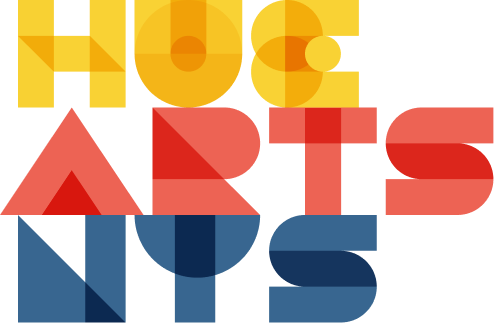HueArts NYS has adopted certain terminology within the body of this paper, and explanations for some of the terms and phrases are below. Language within quoted material may be different. HueArts NYS recognizes the importance of representing the testimonials in the vernacular submitted by the individuals quoted, with only minor edits made to clarify a point when necessary. Here are some of the terms that appear throughout the paper:
African American
Americans of African, and especially Black African, descent. We have generally used the more inclusive adjective “Black,” except when people or organizations self-identify as African American.
Arts, cultural, and historical entities founded and led by Black, Latine, Indigenous, Asian, Pacific Islander, Middle Eastern, and all People of Color
These are the entities listed in the Map and Directory and reflected in the Brown Paper. We listed out, as best we could, the entire description because it is the most accurate and inclusive description. “Culture” and “history” were added to the original description of “arts entities,” on feedback from Advisory Committee members who noted that it more accurately described their organizations.
BIPOC
This is an acronym for Black, Indigenous, and People of Color.
Black (capitalized)
Black is a term that refers to the man-made construct of race for an individual. Unlike African American, Black can be used regardless of nationality. We have utilized the term Black except in cases where individuals have self-identified, in which case we use the preferred self-identifier.
DEIA
This is an acronym for “Diversity, Equity, Inclusion, and Access.” Many people believe that in order to work toward deeper change, a true sense of “Belonging” should be encompassed in this concept. Within the body of the paper, we generally spell out Diversity, Equity, Inclusion, and Access, and acknowledge the importance of Belonging. However, in many contexts, “DEIA” is also still a commonly-used shortcut.
Indigenous (capitalized)
With Indigenous rights movements, this term became a way for Indigenous peoples to articulate common challenges of colonialism, settler governments, displacement, and exploitation. As opposed to the small-i adjective “indigenous,” (which can refer to many people and things), the capitalized term identifies a group of political and historical communities.
Latine (capitalized)
This is a gender-neutral alternative to using the letters “a” and “o” as feminine and masculine identifiers (Latina/Latino). Latinx is also used by some as a gender-neutral alternative, but the letter “e” is sometimes preferred as more in keeping with Spanish pronunciation.
New York State
This paper studies individuals and entities working throughout New York State with the exception of the city of New York, which was covered in an earlier study. Usually, the term New York State is used to describe the area covered in this report. “Upstate” is a term sometimes used to describe counties north of suburban Westchester, Rockland and Dutchess counties, but outside of quoted material we have decided not to reflect the “upstate/downstate” divide. This choice is a way to avoid reinforcing some of the mistaken assumptions and attitudes that often accompany these terms (such as the notion that “downstate” is urban and “upstate” is rural; or that “downstate” is the state’s focal point and “upstate” is everything else). This choice is also a subtle way to advocate that the state work together as a whole, in hopes that this report will open up people from all parts of the state to explore whatever other parts are unknown to them.
POC
An acronym for People of Color, this term is sometimes used as a unifier, or simply for brevity. Within the body of the paper we have generally chosen to spell out the names of the communities encompassed.
